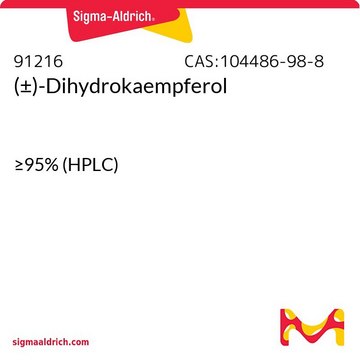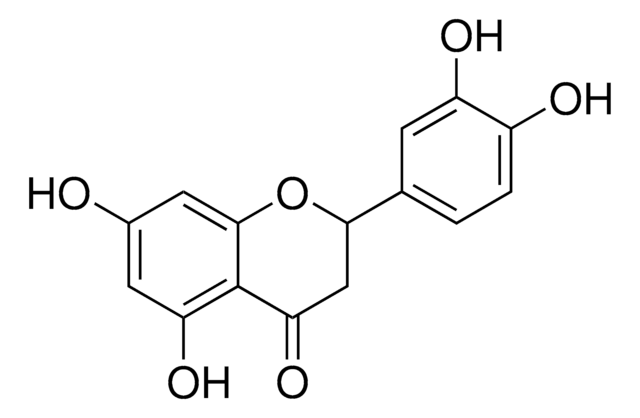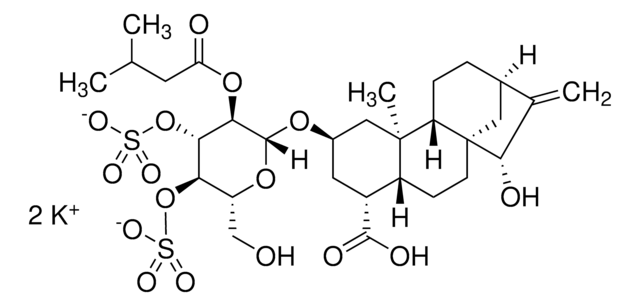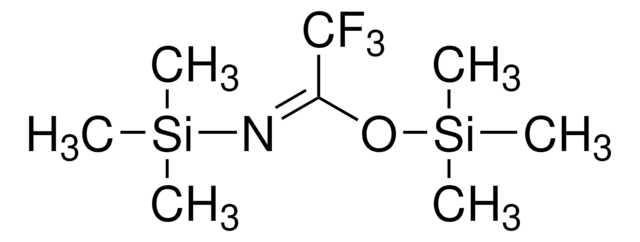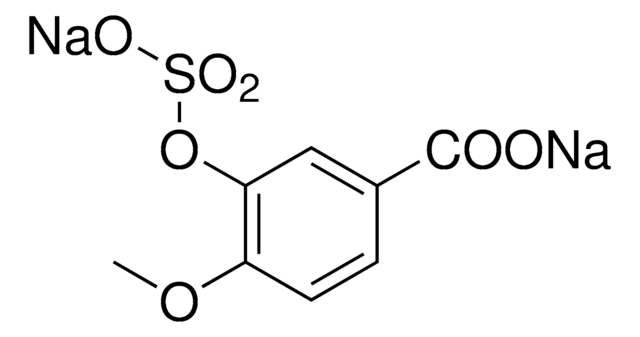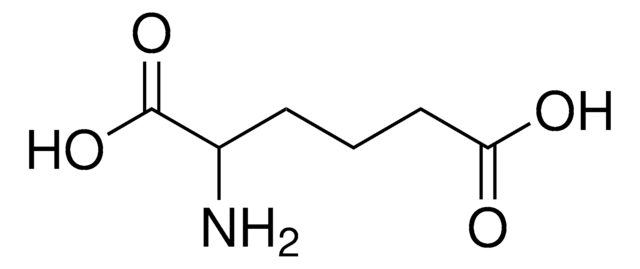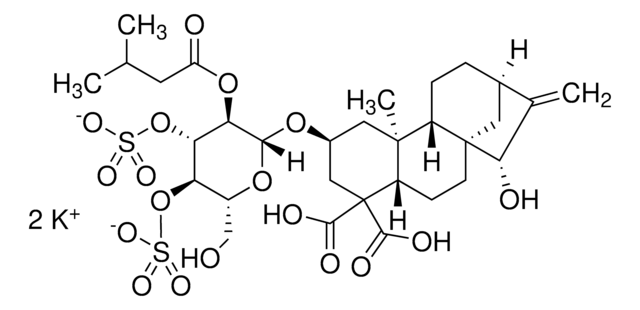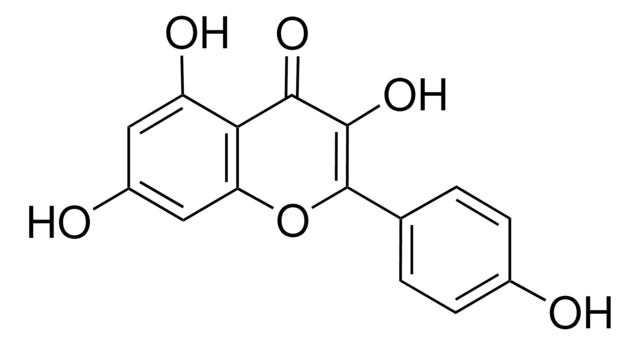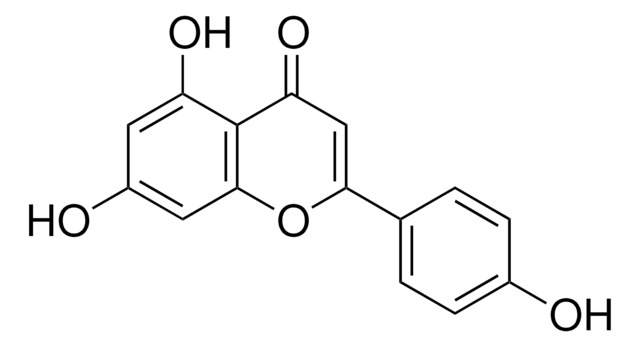B6179
Bongkrekic acid solution
from Pseudomonas cocovenenans, ≥95% (HPLC), solution, adenine nucleotide translocase inhibitor
About This Item
Recommended Products
Product Name
Bongkrekic acid solution, from Pseudomonas cocovenenans, ≥95% (HPLC), ~1 mg/mL
biological source
Pseudomonas cocovenenans
Quality Level
Assay
≥95% (HPLC)
form
solution
concentration
~1 mg/mL
shipped in
wet ice
storage temp.
−20°C
SMILES string
CO[C@H](C/C=C\C=C\CC\C=C\C[C@H](C)\C=C\C(CC(O)=O)=C/C(O)=O)\C(C)=C/C=C(\C)C(O)=O
InChI
1S/C28H38O7/c1-21(15-18-24(19-26(29)30)20-27(31)32)13-11-9-7-5-6-8-10-12-14-25(35-4)22(2)16-17-23(3)28(33)34/h6,8-12,15-19,21,25H,5,7,13-14,20H2,1-4H3,(H,29,30)(H,31,32)(H,33,34)/b8-6+,11-9+,12-10-,18-15+,22-16-,23-17+,24-19+/t21-,25+/m0/s1
InChI key
SHCXABJSXUACKU-WUTQZGRKSA-N
Application
Biochem/physiol Actions
Features and Benefits
Other Notes
Physical form
Storage Class Code
12 - Non Combustible Liquids
WGK
WGK 1
Flash Point(F)
Not applicable
Flash Point(C)
Not applicable
Personal Protective Equipment
Regulatory Information
Choose from one of the most recent versions:
Certificates of Analysis (COA)
Don't see the Right Version?
If you require a particular version, you can look up a specific certificate by the Lot or Batch number.
Already Own This Product?
Find documentation for the products that you have recently purchased in the Document Library.
Articles
Apoptosis regulation involves multiple pathways and molecules for cellular homeostasis.
Cell cycle phases (G1, S, G2, M) regulate cell growth, DNA replication, and division in proliferating cells.
Our team of scientists has experience in all areas of research including Life Science, Material Science, Chemical Synthesis, Chromatography, Analytical and many others.
Contact Technical Service